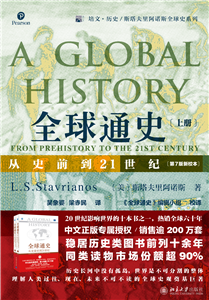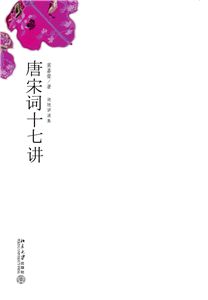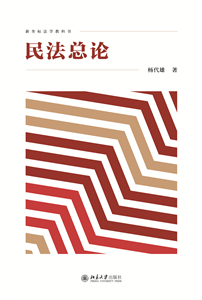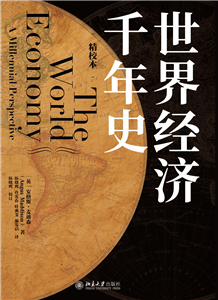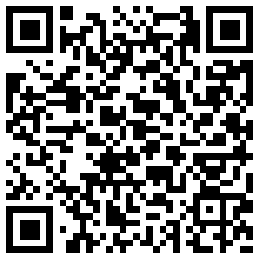基本信息 Information

语用学导论
CONTENTS
Chapter 1Introduction
1.1Definitions of pragmatics
1.2Meaning and context
1.3Development of pragmatics
1.4Organization of the book
1.5Review
Chapter 2Deixis
2.1Preliminaries
2.2Deictic and nondeictic uses
2.3Types of deixis
2.3.1Person deixis
2.3.2Time deixis
2.3.3Place deixis
2.3.4Social deixis
2.3.5Discourse deixis
2.4Applications: Chinese vocatives as pragmatic markers
2.4.1Introduction
2.4.2Vocatives and coherence
2.4.3Vocatives and involvement
2.4.4Vocatives and (im)politeness
2.5Review
Chapter 3Presupposition
3.1Entailment
3.1.1Preliminaries
3.1.2Types of entailment
3.2Presupposition
3.2.1Preliminaries
3.2.2Types of presupposition
3.2.3Properties of presupposition
3.2.4Presupposition trigger
3.3A comparison between entailment and presupposition
3.4Applications: Entailment and presupposition in real life
3.4.1English writing
3.4.2Interpersonal communication
3.5Review
Chapter 4Implicature
4.1Preliminaries
4.1.1Natural and non-natural meaning
4.1.2Implicature and implication
4.2Types of implicature
4.2.1Conversational and conventional implicatures
4.2.2Generalized and particularized conversational implicatures
4.2.3Scalar, alternate, and clausal implicatures
4.3Classical Gricean Theory
4.3.1Cooperative principle
4.3.2Creation of conversational implicature
4.3.3Criticisms of Gricean theory
4.4NeoGricean and PostGricean Theories
4.4.1Levinson’s Q, I, and MPrinciples
4.4.2Horn’s Q and RPrinciples
4.4.3Sperber & Wilson’s Principle of Relevance
4.4.4Retrospections
4.5Properties of conversational implicature
4.6Applications: Exploiting the four Maxims in Friends
4.6.1Exploiting the Maxim of Quantity
4.6.2Exploiting the Maxim of Quality
4.6.3Exploiting the Maxim of Relation
4.6.4Exploiting the Maxim of Manner
4.7Review
Chapter 5Speech Acts
5.1Preliminaries
5.1.1Performativeconstative dichotomy
5.1.2The performative hypothesis
5.2Austin’s theorizing of speech acts
5.2.1Felicity conditions on performatives
5.2.2Locutionary, illocutionary, and perlocutionary acts
5.2.3Types of illocutionary force
5.3Searle’s theorizing of speech acts
5.3.1Felicity conditions on speech acts
5.3.2Typology of speech acts
5.3.3Direct and indirect speech acts
5.4Recent developments in Speech Act Theory
5.4.1Study of perlocution
5.4.2Classifications of speech acts
5.4.3Sequencing in speech acts
5.5Speech acts across cultures and contexts
5.5.1Crosscultural variations
5.5.2Intralanguage variations
5.6Applications: Persuasion in Chinese online forum requests
5.6.1Introduction
5.6.2Ethos: Projecting self to the requestees
5.6.3Pathos: Awakening the emotion of the requestees
5.6.4Logos: Reasoning with the requestees
5.7Review
Chapter 6Politeness and Impoliteness
6.1Theorizing politeness
6.1.1Characterizing politeness
6.1.2Politeness as strategic face management
6.1.3Politeness as a conversational maxim
6.1.4Politeness as situated evaluation
6.2Theorizing impoliteness
6.2.1Types of impoliteness
6.2.2Impoliteness as strategic face attacks
6.2.3Impoliteness as conversational maxims
6.2.4Impoliteness as a discursive practice
6.3Some potential issues in (im)politeness research
6.4Applications: Politeness in online forum requests
6.4.1Introduction
6.4.2Bald on record strategies
6.4.3Positive politeness strategies
6.4.4Negative politeness strategies
6.5Review
Chapter 7Research Methods
7.1Literature mining
7.1.1Four types of exigences
7.1.2Review articles and bibliographies
7.1.3Search engines and databases
7.1.4Bibliometric analysis and knowledge visualization
7.2Data collection
7.2.1Interviews
7.2.2Questionnaires
7.2.3Discourse completion tests
7.2.4Role plays
7.2.5Recordings
7.2.6Trending methods
7.3Analytical methods
7.3.1Conversation analysis and discourse analysis
7.3.2Statistical analysis
7.4Review
References
Appendix One Resources
Appendix Two Research Notes
Chapter 1Introduction
1.1Definitions of pragmatics
1.2Meaning and context
1.3Development of pragmatics
1.4Organization of the book
1.5Review
Chapter 2Deixis
2.1Preliminaries
2.2Deictic and nondeictic uses
2.3Types of deixis
2.3.1Person deixis
2.3.2Time deixis
2.3.3Place deixis
2.3.4Social deixis
2.3.5Discourse deixis
2.4Applications: Chinese vocatives as pragmatic markers
2.4.1Introduction
2.4.2Vocatives and coherence
2.4.3Vocatives and involvement
2.4.4Vocatives and (im)politeness
2.5Review
Chapter 3Presupposition
3.1Entailment
3.1.1Preliminaries
3.1.2Types of entailment
3.2Presupposition
3.2.1Preliminaries
3.2.2Types of presupposition
3.2.3Properties of presupposition
3.2.4Presupposition trigger
3.3A comparison between entailment and presupposition
3.4Applications: Entailment and presupposition in real life
3.4.1English writing
3.4.2Interpersonal communication
3.5Review
Chapter 4Implicature
4.1Preliminaries
4.1.1Natural and non-natural meaning
4.1.2Implicature and implication
4.2Types of implicature
4.2.1Conversational and conventional implicatures
4.2.2Generalized and particularized conversational implicatures
4.2.3Scalar, alternate, and clausal implicatures
4.3Classical Gricean Theory
4.3.1Cooperative principle
4.3.2Creation of conversational implicature
4.3.3Criticisms of Gricean theory
4.4NeoGricean and PostGricean Theories
4.4.1Levinson’s Q, I, and MPrinciples
4.4.2Horn’s Q and RPrinciples
4.4.3Sperber & Wilson’s Principle of Relevance
4.4.4Retrospections
4.5Properties of conversational implicature
4.6Applications: Exploiting the four Maxims in Friends
4.6.1Exploiting the Maxim of Quantity
4.6.2Exploiting the Maxim of Quality
4.6.3Exploiting the Maxim of Relation
4.6.4Exploiting the Maxim of Manner
4.7Review
Chapter 5Speech Acts
5.1Preliminaries
5.1.1Performativeconstative dichotomy
5.1.2The performative hypothesis
5.2Austin’s theorizing of speech acts
5.2.1Felicity conditions on performatives
5.2.2Locutionary, illocutionary, and perlocutionary acts
5.2.3Types of illocutionary force
5.3Searle’s theorizing of speech acts
5.3.1Felicity conditions on speech acts
5.3.2Typology of speech acts
5.3.3Direct and indirect speech acts
5.4Recent developments in Speech Act Theory
5.4.1Study of perlocution
5.4.2Classifications of speech acts
5.4.3Sequencing in speech acts
5.5Speech acts across cultures and contexts
5.5.1Crosscultural variations
5.5.2Intralanguage variations
5.6Applications: Persuasion in Chinese online forum requests
5.6.1Introduction
5.6.2Ethos: Projecting self to the requestees
5.6.3Pathos: Awakening the emotion of the requestees
5.6.4Logos: Reasoning with the requestees
5.7Review
Chapter 6Politeness and Impoliteness
6.1Theorizing politeness
6.1.1Characterizing politeness
6.1.2Politeness as strategic face management
6.1.3Politeness as a conversational maxim
6.1.4Politeness as situated evaluation
6.2Theorizing impoliteness
6.2.1Types of impoliteness
6.2.2Impoliteness as strategic face attacks
6.2.3Impoliteness as conversational maxims
6.2.4Impoliteness as a discursive practice
6.3Some potential issues in (im)politeness research
6.4Applications: Politeness in online forum requests
6.4.1Introduction
6.4.2Bald on record strategies
6.4.3Positive politeness strategies
6.4.4Negative politeness strategies
6.5Review
Chapter 7Research Methods
7.1Literature mining
7.1.1Four types of exigences
7.1.2Review articles and bibliographies
7.1.3Search engines and databases
7.1.4Bibliometric analysis and knowledge visualization
7.2Data collection
7.2.1Interviews
7.2.2Questionnaires
7.2.3Discourse completion tests
7.2.4Role plays
7.2.5Recordings
7.2.6Trending methods
7.3Analytical methods
7.3.1Conversation analysis and discourse analysis
7.3.2Statistical analysis
7.4Review
References
Appendix One Resources
Appendix Two Research Notes

